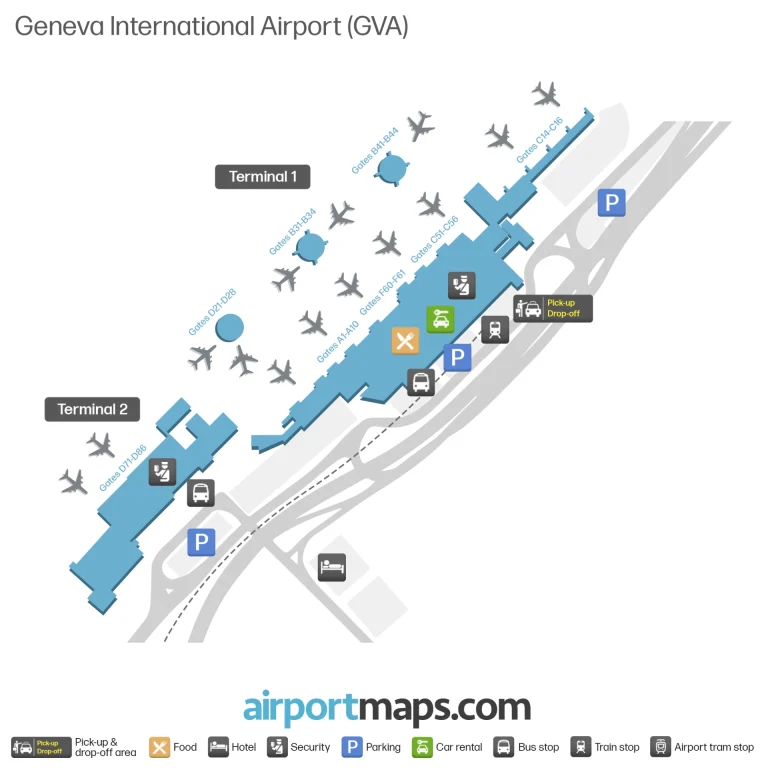Gimpo International Airport Terminal Map (2025-2024)
Simple enough. Approaching by Seoul Metro Lines 5 and 9 or AREX puts you close to both Domestic and International halls, so Gimpo International Airport (GMP) spreads traffic across two terminals connected by short indoor routes.
Use this Gimpo International Airport Terminal Map to find gates, ground transport, and walking routes without backtracking. Look for clear “Transfers” arrows on Arrivals Level 1.
The layout stays compact, which helps when moving between security, lounges, or curbside on Departures Level 2.
Gimpo International Airport Terminal Map 2025-2024

Gimpo International Airport Terminal Domestic Bus Transit Map 2025-2024
Seoul Airport Terminal offers domestic bus transit services connecting the airport to various destinations within South Korea.
Buses depart from designated areas outside the terminal buildings. Passengers can purchase tickets at counters or kiosks located in the arrival halls.

Gimpo International Airport Terminal Int. Bus Transit Map 2025-2024
International bus transit services are available at Seoul Airport Terminal, connecting the airport to major cities in neighboring countries.
These buses typically depart from dedicated international bus terminals adjacent to the main airport complex. Advance booking is recommended for international bus services.

Gimpo International Airport Terminal Arrival Map 2025-2024
The arrival area at Seoul Airport Terminal is located on the first floor of the main terminal building.
It features baggage claim areas, customs and immigration facilities, and various transportation options. Arriving passengers can find information desks and currency exchange services in this area.

Gimpo International Airport Terminal Departure Map 2025-2024
The departure area at Seoul Airport Terminal is situated on the third floor of the main terminal building. It includes check-in counters, security screening checkpoints, and departure gates.
Passengers should arrive at least 2-3 hours before their scheduled flight time for international departures.

Printable Gimpo International Airport Terminal Map PDF 2025-2024
FAQ
What is the difference between terminal 1 and 2 in Seoul?
The main difference between Terminal 1 and Terminal 2 at Seoul Incheon Airport is their airline assignments and services. Terminal 1 handles more international airlines, while Terminal 2 primarily accommodates Korean Air, Delta, and their SkyTeam partners. Terminal 2 offers newer facilities and enhanced passenger experience.
What airlines use terminal 1 at Incheon airport?
Airlines that use Terminal 1 at Incheon Airport include Emirates, Air India, Lufthansa, Turkish Airlines, and many others. This terminal handles the majority of non-SkyTeam international airlines.
What airlines use Terminal 2 at Incheon?
Terminal 2 at Incheon Airport is exclusively used by Korean Air, Delta Air Lines, Air France, KLM, and other SkyTeam Alliance members.
How many terminals does Seoul airport have?
Seoul’s Incheon Airport has two passenger terminals: Terminal 1 and Terminal 2. Both are connected by shuttle services and serve domestic and international flights.






